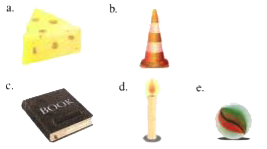Mg and Zn have the following resemblance:
MgO and ZnO are amphoteric.
MgCO3 and ZnCO3 both on heating give corresponding oxide.
Both are used as electrodes.
Both are used to prevent corrosion
The correct Answer is:B, C, D
To determine the resemblance between magnesium (Mg) and zinc (Zn), we will evaluate the four statements provided in the question.
1. Evaluate the first statement: "MgO and ZnO are amphoteric."
- Magnesium oxide (MgO) is primarily a basic oxide, meaning it reacts with acids but not with bases.
- Zinc oxide (ZnO), on the other hand, is amphoteric, as it can react with both acids and bases.
- Conclusion: This statement is false because MgO is not amphoteric.
2. Evaluate the second statement: "MgCO3 and ZnCO3 both on heating give corresponding oxide."
- When magnesium carbonate (MgCO3) is heated, it decomposes to form magnesium oxide (MgO) and carbon dioxide (CO2):
MgCO3→MgO+CO2
- Similarly, zinc carbonate (ZnCO3) also decomposes upon heating to produce zinc oxide (ZnO) and carbon dioxide (CO2):
ZnCO3→ZnO+CO2
- Conclusion: This statement is true.
3. Evaluate the third statement: "Both are used as electrodes."
- Both magnesium and zinc can be used as electrodes in electrochemical cells. They can serve as anodes due to their ability to lose electrons easily.
- Conclusion: This statement is true.
4. Evaluate the fourth statement: "Both are used to prevent corrosion."
- Magnesium and zinc are both used in corrosion prevention methods. They can form protective oxide layers that inhibit further corrosion. Zinc is commonly used in galvanization to protect iron and steel, while magnesium is used in various alloys and coatings.
- Conclusion: This statement is true.
Final Conclusion:
Based on the evaluations:
- The first statement is false.
- The second, third, and fourth statements are true.
Thus, the correct options are B, C, and D.
- Magnesium oxide (MgO) is primarily a basic oxide, meaning it reacts with acids but not with bases.
- Zinc oxide (ZnO), on the other hand, is amphoteric, as it can react with both acids and bases.
- Conclusion: This statement is false because MgO is not amphoteric.
- When magnesium carbonate (MgCO3) is heated, it decomposes to form magnesium oxide (MgO) and carbon dioxide (CO2):
MgCO3→MgO+CO2
- Similarly, zinc carbonate (ZnCO3) also decomposes upon heating to produce zinc oxide (ZnO) and carbon dioxide (CO2):
ZnCO3→ZnO+CO2
- Conclusion: This statement is true.
- Both magnesium and zinc can be used as electrodes in electrochemical cells. They can serve as anodes due to their ability to lose electrons easily.
- Conclusion: This statement is true.
- Magnesium and zinc are both used in corrosion prevention methods. They can form protective oxide layers that inhibit further corrosion. Zinc is commonly used in galvanization to protect iron and steel, while magnesium is used in various alloys and coatings.
- Conclusion: This statement is true.
Based on the evaluations:
- The first statement is false.
- The second, third, and fourth statements are true.
Topper's Solved these Questions
- S-BLOCK GROUP 2 - ALKALINE EARTH METALSBook:CENGAGE CHEMISTRY ENGLISHChapter:S-BLOCK GROUP 2 - ALKALINE EARTH METALSExercise:Exercises Single Correct
Explore 82 Videos
- S-BLOCK GROUP 2 - ALKALINE EARTH METALSBook:CENGAGE CHEMISTRY ENGLISHChapter:S-BLOCK GROUP 2 - ALKALINE EARTH METALSExercise:Exercises Assertion Reasoning
Explore 17 Videos
- S-BLOCK GROUP 2 - ALKALINE EARTH METALSBook:CENGAGE CHEMISTRY ENGLISHChapter:S-BLOCK GROUP 2 - ALKALINE EARTH METALSExercise:Exercises Linked Comprehension
Explore 42 Videos
- S-BLOCK GROUP 1 - ALKALI METALSBook:CENGAGE CHEMISTRY ENGLISHChapter:S-BLOCK GROUP 1 - ALKALI METALSExercise:Archives Subjective
Explore 8 Videos
- SOME BASIC CONCEPTS AND MOLE CONCEPTBook:CENGAGE CHEMISTRY ENGLISHChapter:SOME BASIC CONCEPTS AND MOLE CONCEPTExercise:Archives Subjective
Explore 11 Videos
Similar Questions
Knowledge Check
Based on the following reactions, arrange the metals in increasing order of their reduction potentials.
Cu+2Ag+→Cu2++2Ah
Mg+Zn2+→Mg2++Zn
Zn+Cu2+→Zn2++CuAMg>Zn>Cu>AgBMg<Zn<Cu<AgCZn>Cu>Ag>MgDMg>Cu>Zn>Ag
Name the solid shape which each of the following figures resembles.
a.
View SolutionWrite the name of the solid shape that each of the following objects resembles in the blanks provided.
(a)
View SolutionName the 3D shapes that each of the following objects resembles.
a.
View SolutionConsidering Ellingham diagram, which of the following metals can be used to reduce alumina?
(a)Mg
(b)Zn
(c)Fe
(d)Cu
View SolutionConvert the following values as indicated.
4 g 5 mg into mg
View SolutionConsider the following concentration cell:
Zn(s)∣∣Zn2+(0.024M)∣∣∣∣Zn2+(0.480M)∣∣Zn(s)
which of the following statements is / are correct?
View SolutionConsider the following concentration cell:
Zn(s)∣∣Zn2+(0.024M)∣∣∣∣Zn2+(0.480M)∣∣Zn(s)
which of the following statements is / are correct?
View Solution